Understanding the Human Figure – book content

Creating Human Figure: good composition is half the success
When you start working on creating a human figure, the first thing
you need to figure out is the composition. In figurative sculpting, this
mostly means deciding on the posture and movement, the relationship
between the dynamic and static elements.
The Understanding the Human Figure book divides the human body into three groups of moving elements:
- Group A: Thorax, Pelvis, Head. These elements create the basis for the pose;
- Group B: Upper, Lower limbs. They support the movement and balance the posture;
- Group C: Eyes, Mouth, Hands, Fingers, Feet, Toes. These little elements complete the composition.

In the Understanding the Human Figure book, you will find tips on positioning these elements the best way, depending on your goal. It also helps you with examples of how to design each element and build a better overall composition.
The very first thing we usually see is the silhouette. If you get this right, then also the composition of the figure can be considered successful.
What makes the silhouette right?
A good profile is one where all the elements do not overlap when viewed from any side – that makes your silhouette right. And even if elements overlap, the figure shouldn’t lose any readability and should remain understandable.
The illustration below is from the Understanding the Human Figure book, and it demonstrates how to evaluate the silhouette. Just take a photo of unfinished work with light shining from behind the artwork, then outline the object and fill it in with solid color. Et voilà, you have yourself a silhouette to look at! Do the elements overlap too much, or is your composition right?
When you’re sure about the composition, the next step is to take care of the form. Before analyzing the figure anatomically, try to understand the general form of each element. Do it in the order suggested by the Understanding the Human Figure book: A, B, and then C. Start with group A and sort the basic shapes of the Thorax, Pelvis, and Head. Move on to group B and finish off with the general form of group C elements.
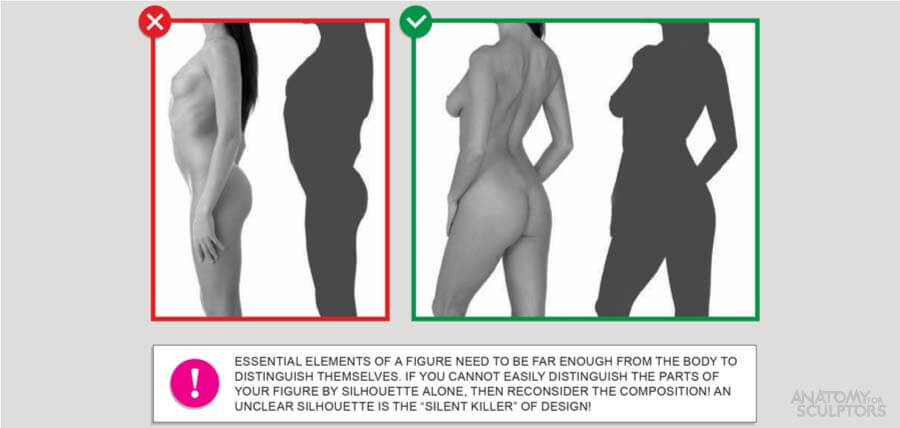
When we’ve structured the composition and basic shapes of the figure, it’s time for anatomy. The anatomy covered in the Understanding the Human Figure book is called Surface Anatomy. The main difference between Surface Anatomy and anatomy for physicians is that it includes and focuses on the part of the anatomy that affects the surface forms. Its main elements are Muscles, Tendons, Bones, and Fat.
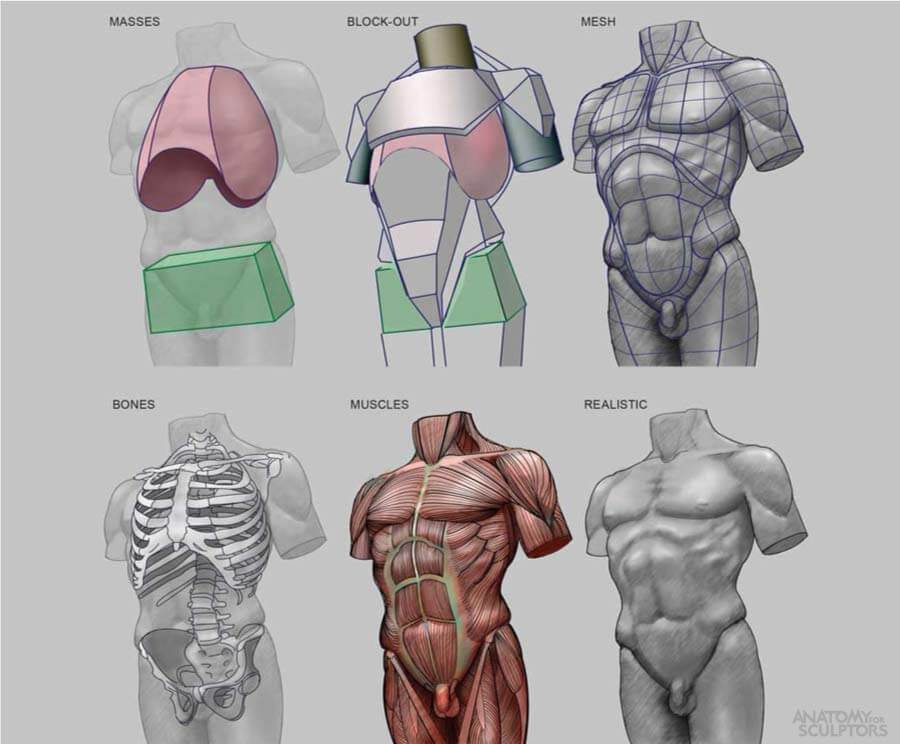
Main Age and Gender (male and female anatomy) differences
For artists, it’s much more important to understand the anatomical surface forms than in medical studies. Equally important are also the changes in anatomical forms caused by movement. The Understanding the Human Figure book considers individual morphology and the human figure’s main age and gender (female and male anatomy) differences.
In the book, Uldis Zarins explains the characteristics of each of these groups. The appendix of the Understanding the Human Figure book also charts the age and gender ratio variations that will help you work faster in your daily work. It takes out the need to spend time looking for primary references elsewhere.
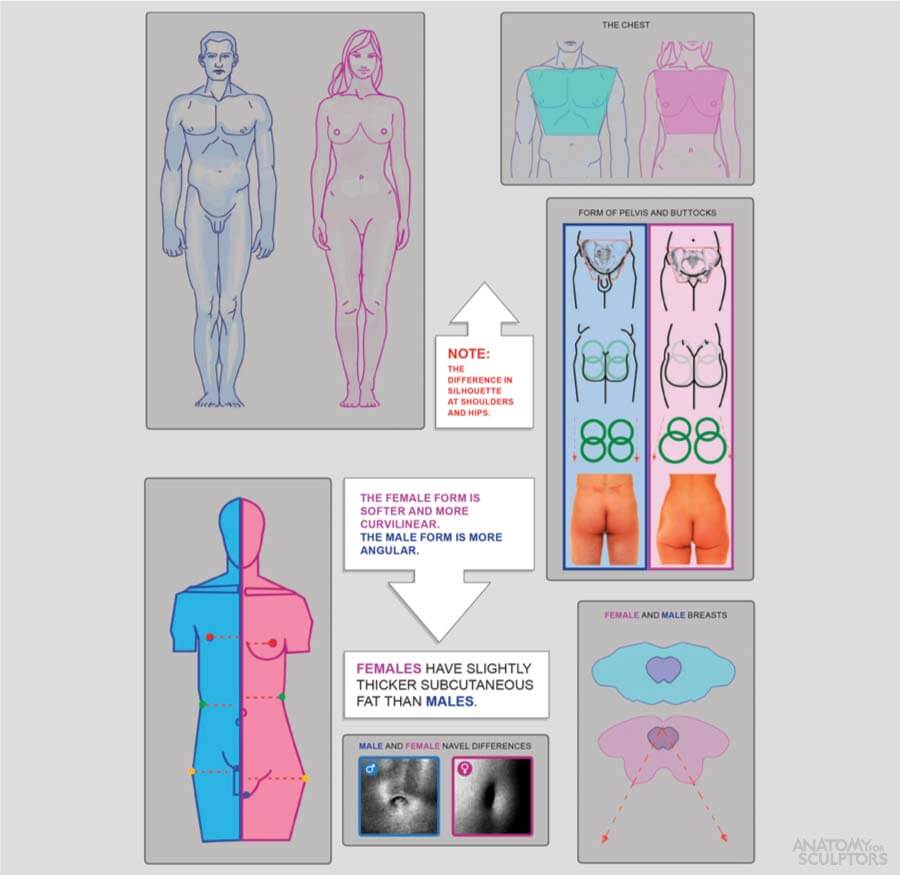
Why do I need to know anatomy?
You need to know anatomy because creating a figure or a portrait takes much more than copying nature. In the case of 2D, photography does this task much better anyways, and in the case of 3D, there are photogrammetry scans to do it.
In the Understanding the Human Figure book, you’ll learn that artist’s responsibility is not to copy but to interpret and add a piece of one’s understanding and view. To enrich our perspective, we augment it with the knowledge of plastic aesthetics and anatomy.
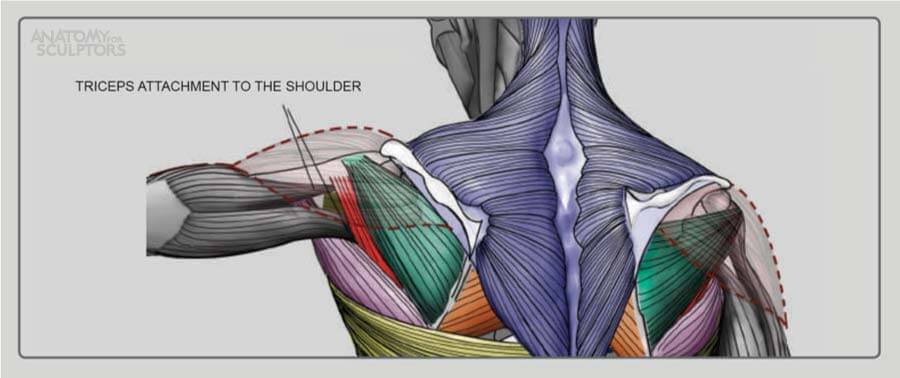
What is Surface Anatomy for artists?
Surface anatomy for artists studies the external visual parts of the human figure. In the Understanding the Human Figure book, surface anatomy reveals itself through the knowledge of its construction: separate elements composing the form of the human body and the dynamic relationship between these elements. This approach to surface anatomy is beneficial for artists who want to understand the human body forms and learn how to create them.

What's the difference between digital and traditional art?
There isn’t that much of a difference between digital and traditional art. Creating digital art sometimes requires more anatomy knowledge: for example, game characters mostly have to look realistic. Historically, artists did not set such goals for themselves. Realism is a relatively new concept in the art scene, and even today, many depictions lean toward abstractions.
Realism is just one direction of modernism, and it was born only in the late 19th century. At that time, there was insufficient knowledge to create genuinely realistic artworks. This knowledge only became sought after recently with the advancement of technologies such as 3D modeling, CGI, and VFX.
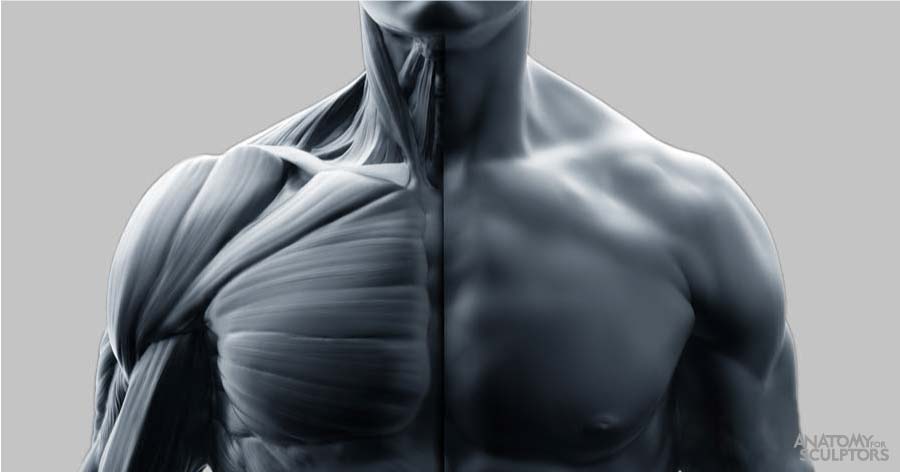
Books on Anatomy for Artists
The book’s author, Uldis Zarins, teaches anatomy at the Art Academy of
Latvia, and he’s an award-winning sculptor with more than 25 years of
experience. After years of fruitless searching for a comprehensive
visual anatomy book for his students, he decided to create a book with
reliable anatomical references for any aspiring artist.
That’s what led him to create the Understanding the Human Figure book! In the Understanding the Human Figure book, he’s dropped all that is unnecessary and covered only the most critical things a visual artist needs to know about human anatomy.
Uldis uses a lot of pictures and color-coding to make the process of perceiving anatomical forms faster. The Understanding the Human Figure book features views of many elements from multiple angles, thus giving an excellent spatial view of objects.
The Understanding the Human Figure book is an anatomy handbook tailored for visual artists – created by a sculptor who understands the practical side of creating art. We are a team of artists and medical experts working together to create precise and reliable anatomy books for artists.
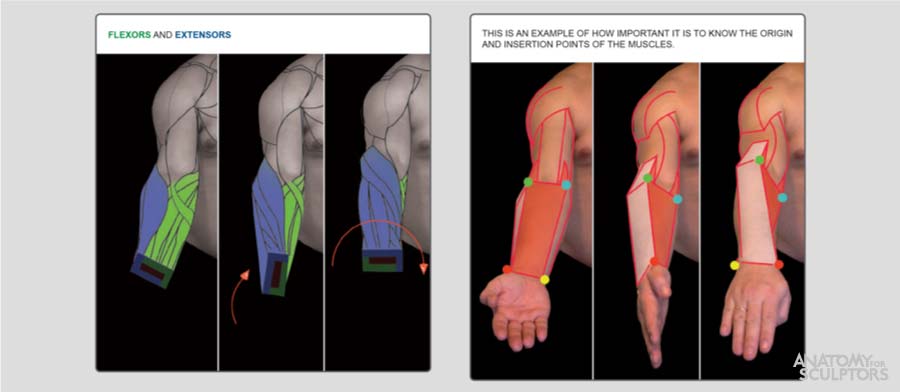
Our community started specifically with the needs of sculptors in mind – hence, the “Sculptors” in Anatomy for Sculptors. But since then, we have shaped the knowledge of human anatomy with all kinds of visual artists in mind.
Artists in CGI and 3D modeling, digital sculpting, and traditional sculpting are the most frequent users of our books. However, many animators, painters, illustrators, designers, also anatomy and medical experts have expressed how helpful the Anatomy for Sculptors books series is for them.
In all our books, we only use text where necessary, thus keeping the experience simple, intuitive, and widely accessible. We achieve this through the teamwork of fantastic 3D and 2D artists who work alongside medical and anatomy experts.
Anatomy For Sculptors: Understanding the Human Figure
This and more is all available in the Understanding the Human Figure book. Available now in Digital Form (PDF) and Printed versions as a Paperback and a Hardcover.
Human Body Proportion Calculator
During our latest Kickstarter, we created a goal to bring back human proportions calculators. It is a tool for artists to calculate all the ideal body proportions, and it’s a great addition to the books. It’s available right now! And it is free to use.
Understanding the Human Figure project on Kickstarter
Join our newsletter
Be the first to receive news about upcoming books, projects, events and discounts!

